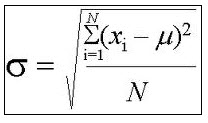Partial Correlation Calculator
Instructions: You can use this Partial Correlation Calculator to compute the corresponding partial Correlations for three variables \(X_1\), \(X_2\) and \(X_3\). All you have to do is type your samples, using either a comma or space separated format (For example: "2, 3, 4, 5", or "3 4 5 6 7").
More about this Partial Correlation Calculator
The partial correlation coefficient assesses the degree of association between two variables \(X_1\) and \(X_2\), when controlling (keeping constant) a third variable \(X_3\). Mathematically, the partial correlation coefficient r between \(X_1\) and \(X_2\), when controlling for \(X_3\) is written as \(r_{12.3}\), and it is computed using the following formula:
\[r_{12.3} =\frac{r_{12} - r_{13}r_{23} }{\sqrt{1 - r_{13}^2 }\sqrt{1 - r_{23}^2 }}\]How To Calculate Coefficient Of Partial Determination
Very simple: Once you know \(r\) (the partial correlation), all you need to do is to square it, to the the coefficient of partial determination \(r^2\). This \(r^2\) represents the variation explained by the one of the variables, when controlling for the variables of the third variable.
If you want to compute the correlation between \(X_1\) and \(X_2\) without controlling for any other variable, you can use this Pearson's correlation coefficient calculator instead.
Tightly related with the concept of partial correlation is the concept of semi-partial correlation, for which you can use the following calculator .


